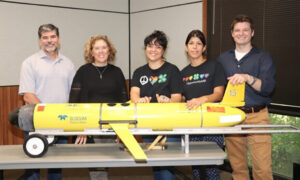Fish reproduction is energetically costly, leading to a suite of energy allocation strategies for maximizing lifetime reproductive potential. Assessing energetic allocation for species that inhabit a wide distributional range can provide insight into different strategies found across individuals and populations. The Northern stock of black sea bass (Centropristis striata) inhabits the U.S. Northeast continental shelf from Cape Hatteras, NC, to the Gulf of Maine, and spawns inshore throughout this distribution from April to October. To assess energy allocation towards spawning, C. striata were collected in four regions across this distribution and throughout their spawning season. By assessing energetic allocation (lipid, energy density and total energy) in muscle, liver and gonad tissues, C. striata were identified as mixed breeders because while they mobilized somatic energy stores towards reproductive development, they also used energy acquired from their diet to sustain reproductive output throughout the spawning season. Unlike male fish, female fish both invested more energy into liver and gonad tissues and exhibited regional differences in energetic values. For both sexes, C. striata in the northern portion of the distribution had lower energetic values both in the somatic stores and towards gonadal development than the fish in the southern portion of the distribution, possibly because of longer migration distance. Overall, the authors found significant spatial variation in energetic constraints that may affect reproductive output and success (recruitment), a relevant result as C. striata are a popular recreational and commercial species throughout this distribution.




